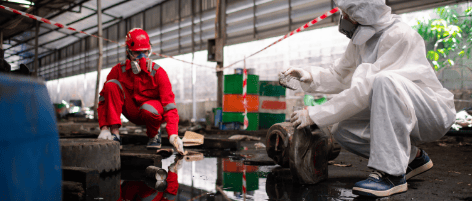Industrial hazardous waste poses a serious threat to both human health and the environment. As a leader in hazardous waste disposal, U.S. Waste Industries, Inc. assists with the identification, handling, transportation, and removal of hazardous substances. Our turnkey services are designed to meet any waste stream management needs. We ensure that manufacturing facilities, laboratories, and other sources of industrial hazardous waste are managed appropriately.
Learn about what is considered hazardous industrial waste, our waste disposal capabilities, and more.






